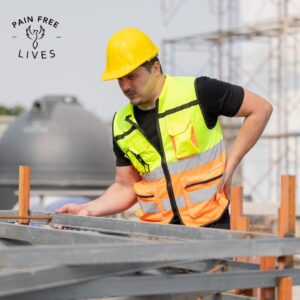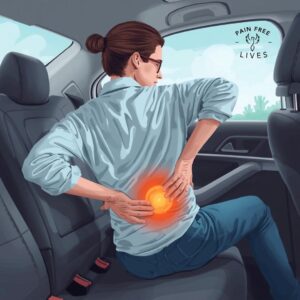
Athletic Histories Deserve Preventive Futures
For many former athletes, the end of competitive play doesn’t mean the end of physical activity—or the aches that come with it. Years after retiring from the sport, it’s not uncommon for former athletes to begin noticing persistent joint stiffness, reduced range of motion, or pain that no longer resolves with rest. These aren’t isolated complaints—they’re early indicators of joint degeneration, a condition that appears sooner and more aggressively in athletic populations compared to non-athletes.
So what makes former athletes particularly vulnerable to early joint wear—and more importantly, what can be done about it?
The Athletic Joint Lifecycle: From Performance to Overload
During an athletic career, the repetitive mechanical load placed on joints is significantly higher than what the average adult experiences. Whether it’s sprinting, pivoting, lifting, or landing, these high-intensity movements—often performed under extreme stress—create microtrauma within joint structures: cartilage, ligaments, and tendons.
While the body is incredibly adaptive, recovery windows are often limited, and the wear accumulates silently. Over time, these minor injuries compound, leading to:
- Cartilage thinning
- Meniscal fraying
- Subchondral bone stress
- Capsular tightness and instability
Unlike traumatic injuries, this degeneration is gradual—so gradual that it often goes unnoticed until joint function begins to decline.
Post-Career Realities: When Training Stops, the Pain Starts
Interestingly, many former athletes only begin to experience pain once their training regimen has decreased. That’s because the supporting muscle groups—glutes, quads, and core stabilizers—that once protected the joints begin to weaken. Without that muscular scaffolding, biomechanical imbalances become more pronounced, and the joints are forced to bear the brunt of daily activity.
Additionally, years of compensatory movement patterns developed during injuries (e.g., offloading a weak knee or ankle) become hardwired into the body’s natural mechanics. These adaptations often accelerate degenerative changes once the athlete transitions to a lower-activity lifestyle.
The High-Risk Joint Zones
While all joints are susceptible, degeneration in former athletes tends to cluster in:
- Knees – Particularly in sports involving jumping, pivoting, or high-speed impact (basketball, soccer, football)
- Hips – Common in runners, dancers, and contact sports athletes
- Shoulders – Often affected in throwing sports or strength-based disciplines
- Spine – Especially in weightlifters, gymnasts, and wrestlers
Degenerative changes in these areas can manifest as early-onset osteoarthritis, joint space narrowing, bone spurs, and chronic inflammation.
Intervention: The Sooner, the Smarter
The best time to intervene is before symptoms become disruptive—and certainly before the need for surgical consideration. A multimodal, regenerative approach has been shown to improve outcomes, extend joint longevity, and reduce pain.
Here’s what early intervention looks like for former athletes:
1. Biomechanical Assessment
A detailed gait, posture, and joint-loading analysis helps identify movement inefficiencies and muscle imbalances. This data guides precise correction strategies to redistribute the load and relieve stress on vulnerable joints.
2. Targeted Physical Therapy
Not all rehab is created equal. Former athletes benefit from sports-specific protocols that re-engage dormant muscle groups while enhancing joint stabilization. The goal is not just to treat pain, but to retrain the kinetic chain.
3. Regenerative Medicine (PRP, BMAC)
Platelet-Rich Plasma (PRP) and Bone Marrow Aspirate Concentrate (BMAC) therapies introduce concentrated growth factors directly to areas of degeneration. In multiple studies, these biologics have been shown to reduce inflammation, stimulate tissue repair, and delay the progression of arthritis—all without surgery.
Pain Free Lives offers image-guided injections to maximize precision and safety for joint, tendon, or ligament targeting.
4. Joint-Friendly Lifestyle Adjustments
Simple changes like switching to low-impact cardiovascular exercise, incorporating anti-inflammatory nutrition, and using ergonomic aids (such as orthotic insoles or supportive seating) can reduce day-to-day joint stress and improve long-term outcomes.
5. Routine Monitoring
Just like an annual physical, former athletes benefit from routine musculoskeletal check-ins to track changes in joint health and functional mobility. This proactive model helps patients stay ahead of symptoms instead of reacting to crisis moments.
The Takeaway: Athletic Histories Deserve Preventive Futures
Athletes train their bodies to push limits—but few are trained to preserve them. At Pain Free Lives, we believe that the same intensity applied to sport should be applied to post-career care. Joint degeneration isn’t inevitable—it’s manageable, preventable, and in many cases, reversible with the right intervention plan.
If you’re a former athlete navigating pain or performance loss, we’re here to help you stay in motion—without the surgery, downtime, or guesswork.







